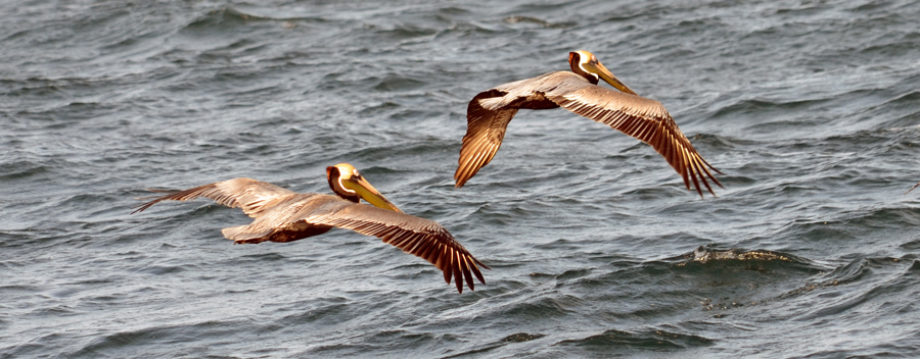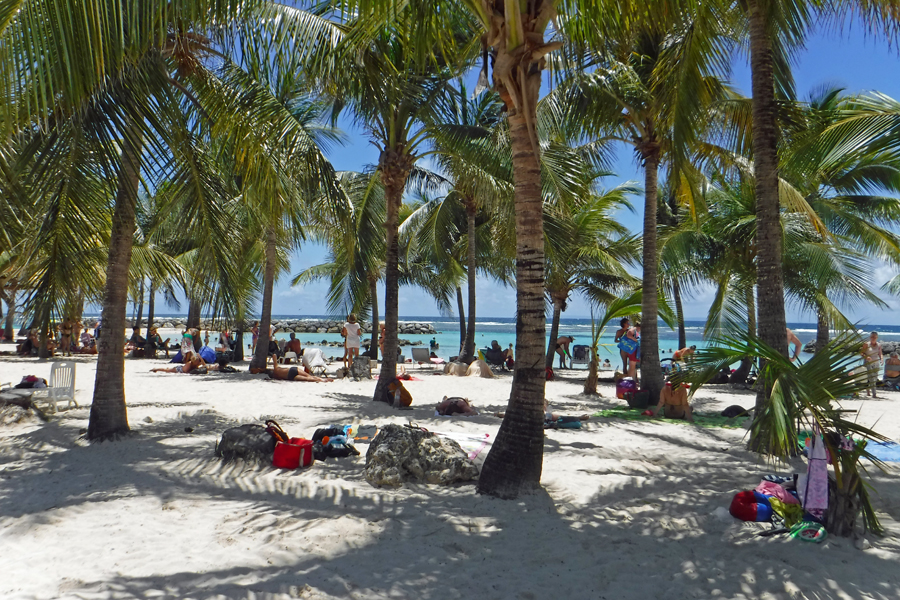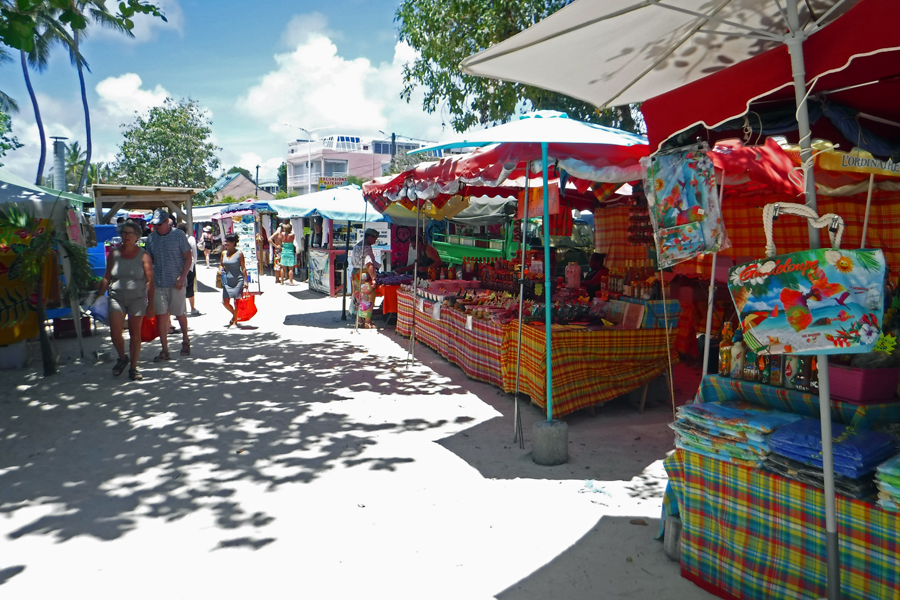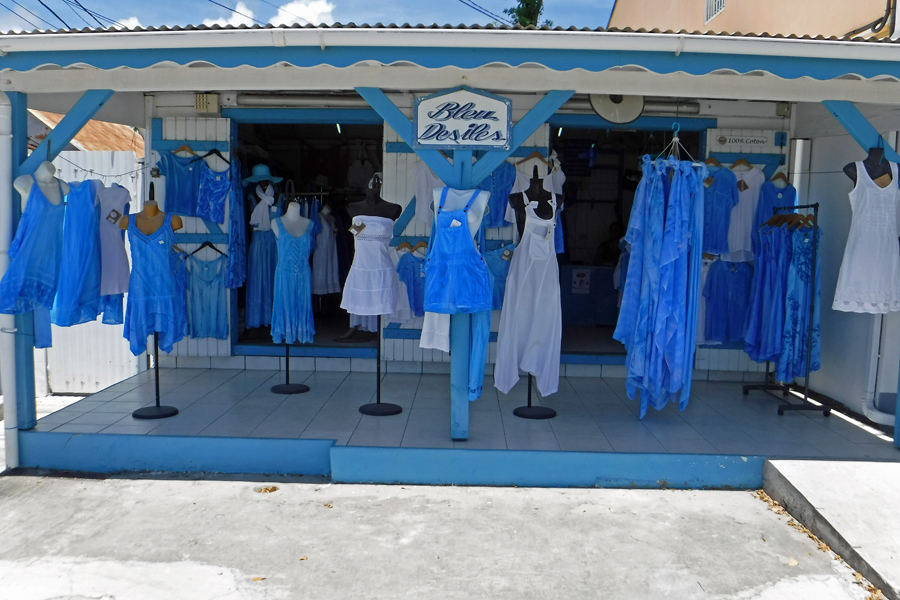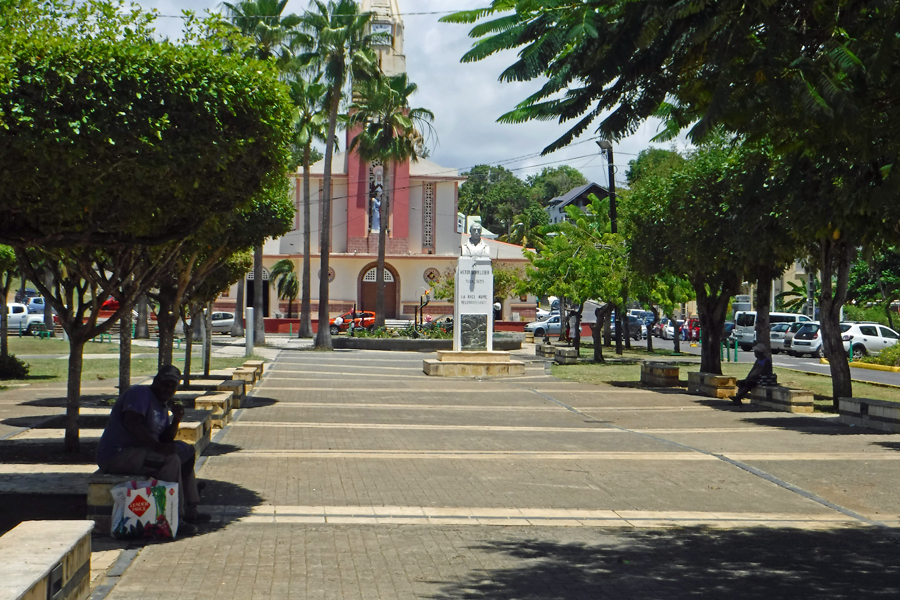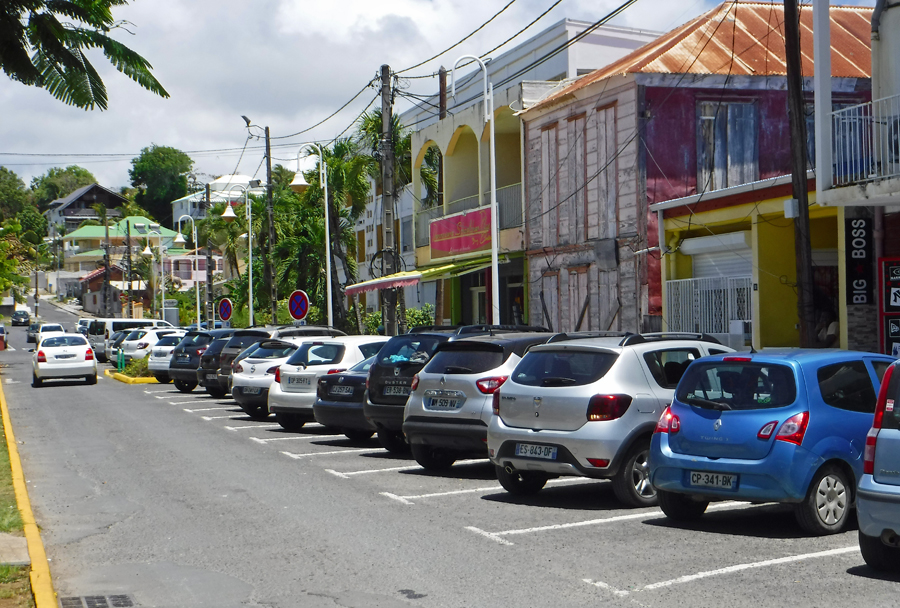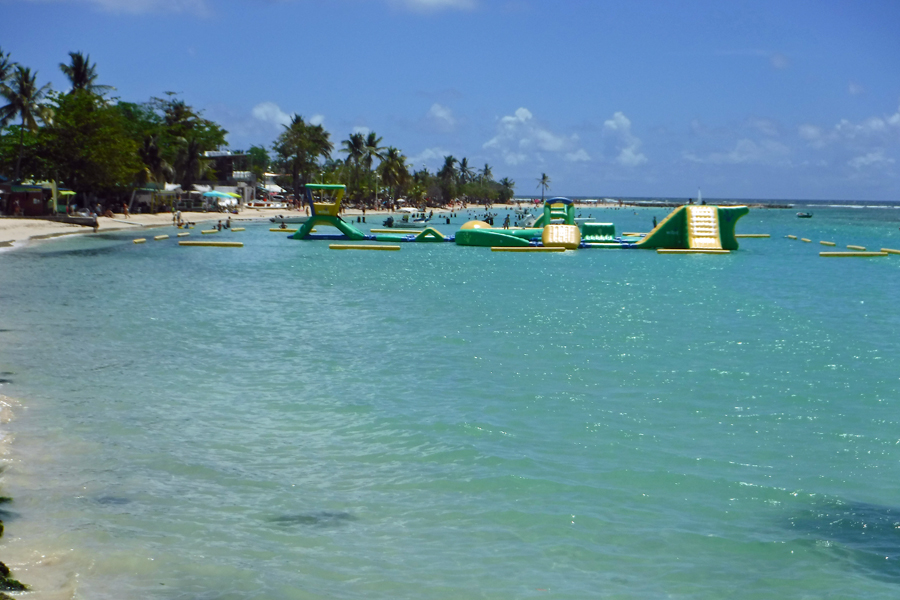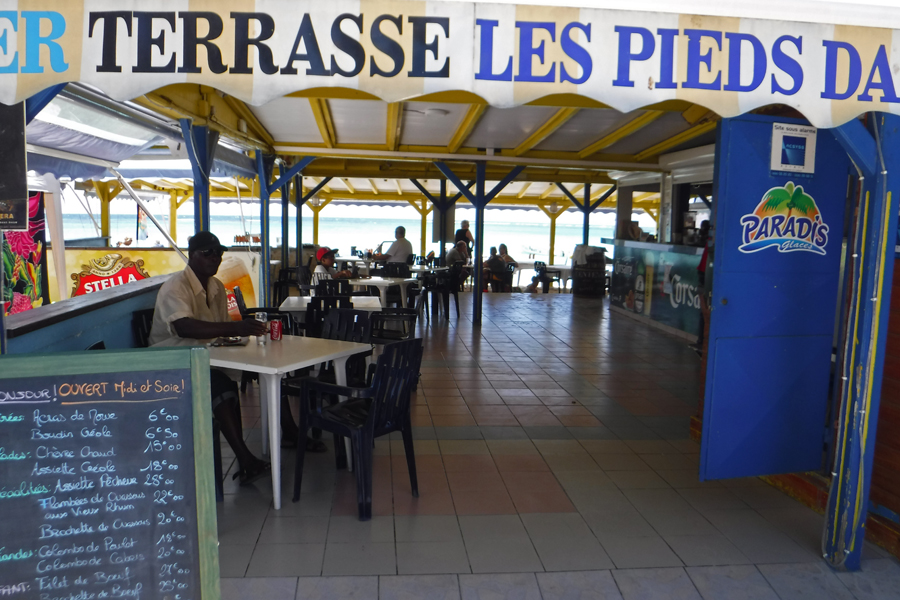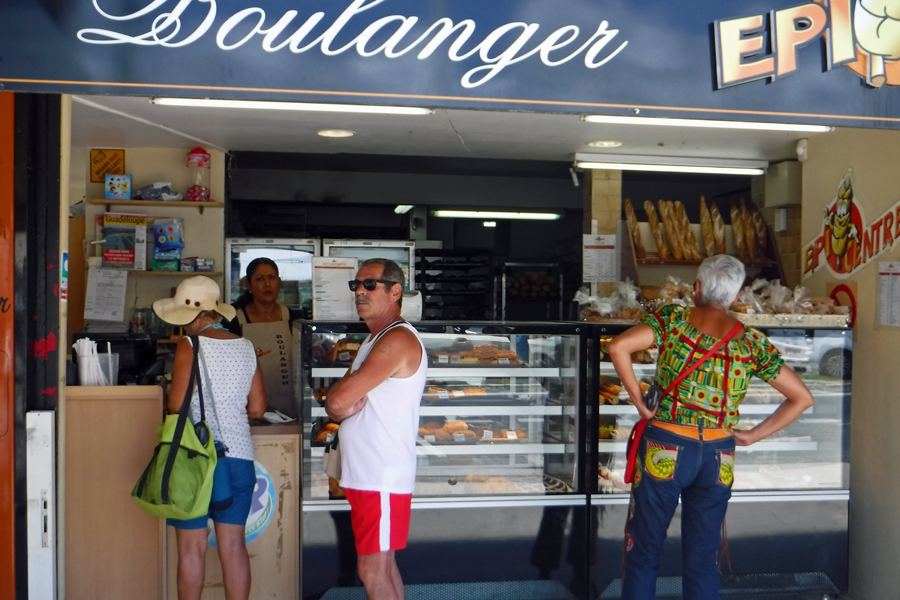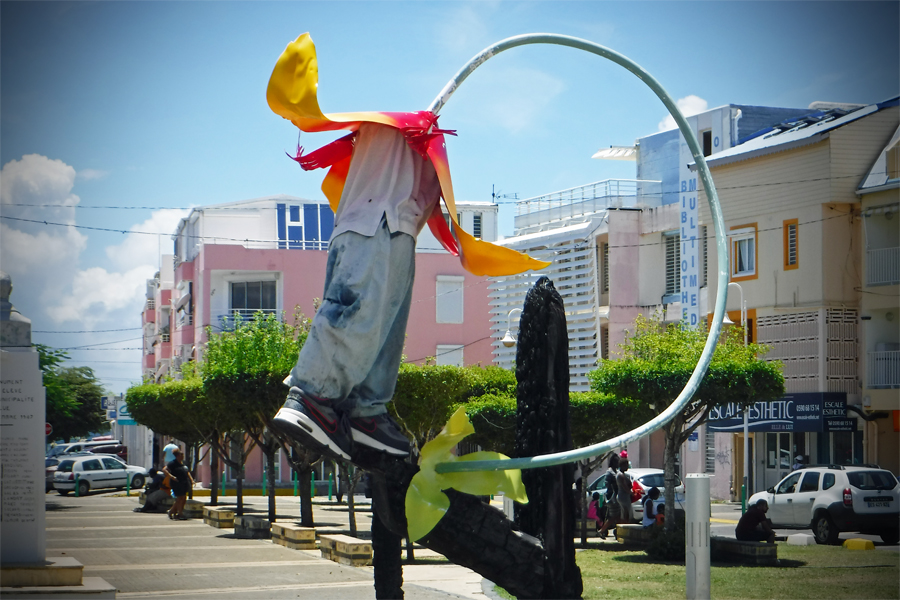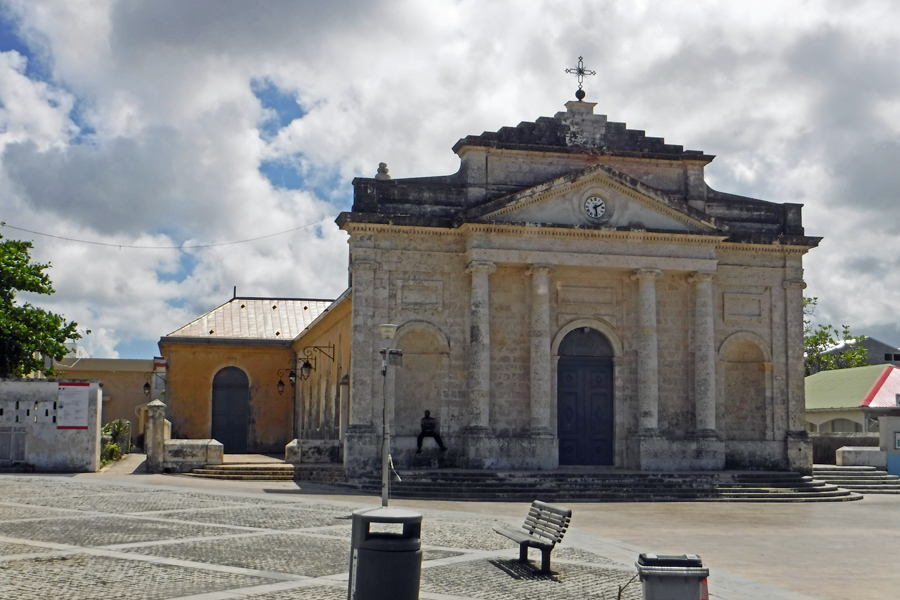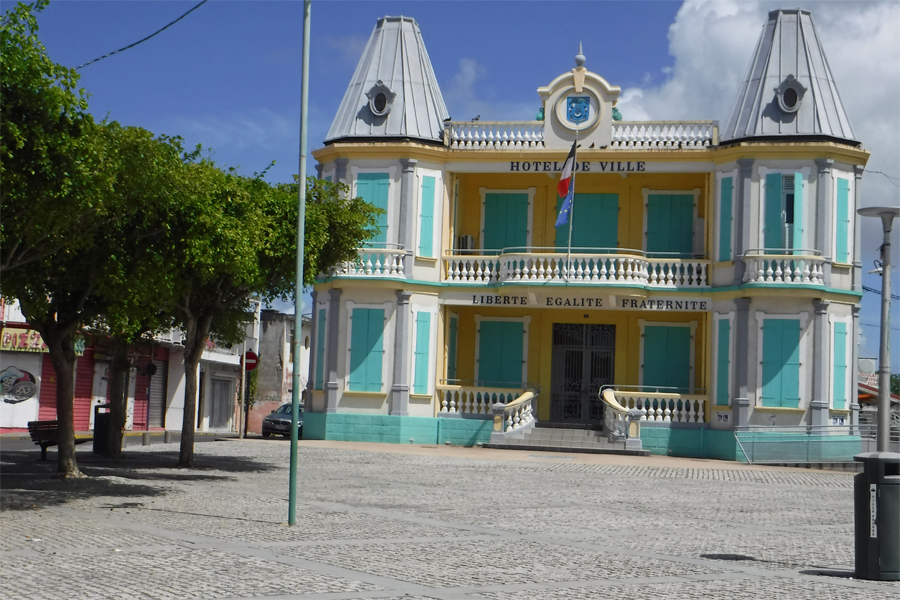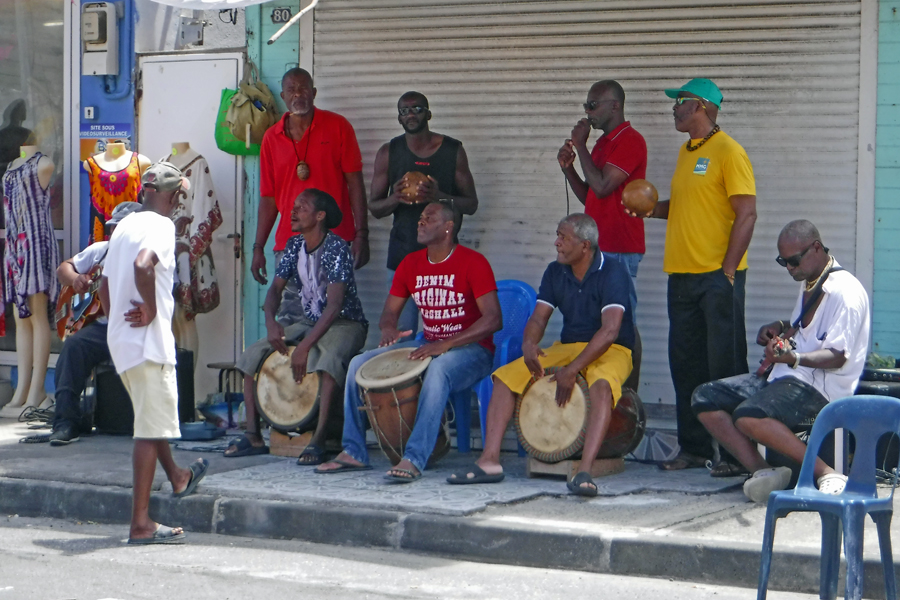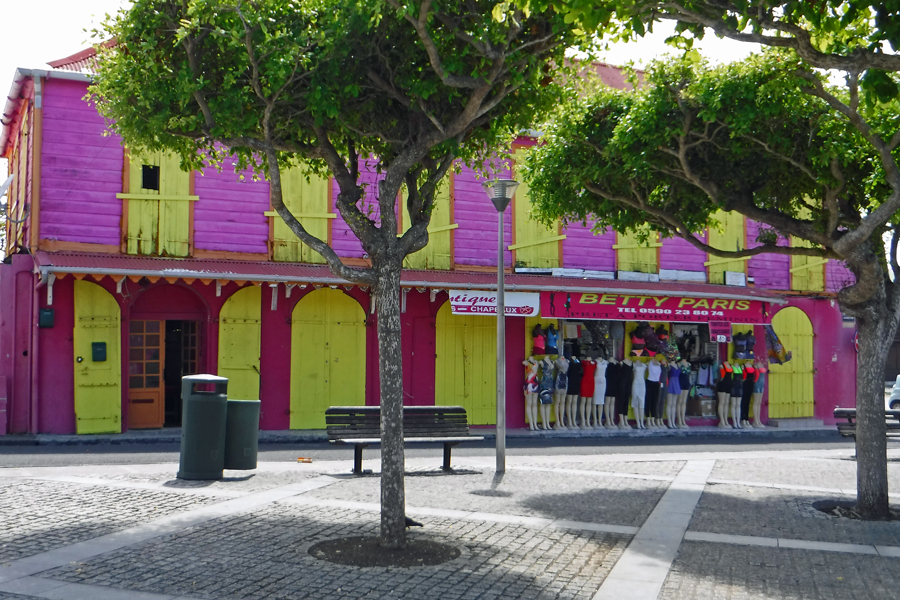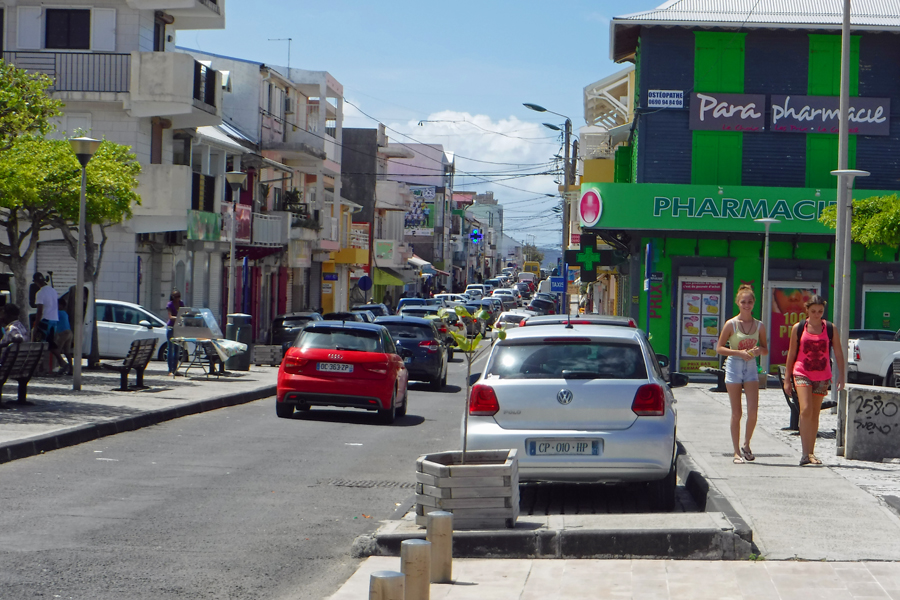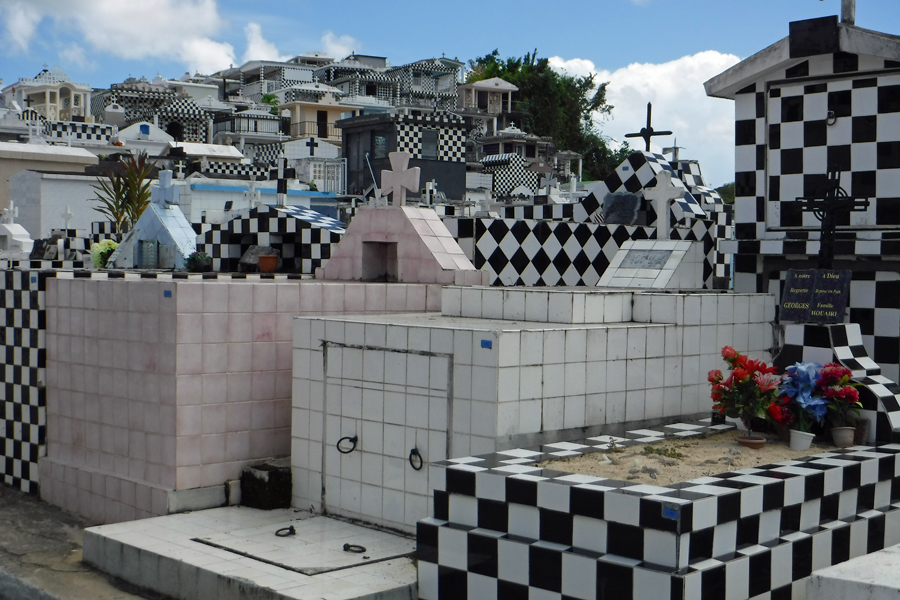One of the things we have notice on the French islands is the local people really seem to enjoy the beaches. When we traveled in the Bahamas, we were both fascinated by the fact the Bahamians wanted nothing to do with beaches or water sports for the most part. There were some islands with sailing teams and some men fished but generally speaking anything more than this was a rarity. We observed the same while on Grenada. It is very different here. On weekends, Guadeloupe beach towns are packed. The same beach town on a week day looks like a ghost town from the Wild West. One of the more beautiful beaches near the capital city of Pointe-a-Pitre is located in Sainte-Anne. Sainte-Anne is located on the leeward side meaning there are no big waves and the shallow lagoon is protected by a reef making this the perfect spot to tan or swim.
Vendors pack the sidewalks and the edge of the beach on weekends. Their wares are varied. Some sell food. Others sell beach towels and bathing suits, just in case you get to the beach and realize you forgot your swimsuit. Souvenirs are a standard staple as are spices. Best of all the tents offer shade.
We divided our exploring into wings. Guadeloupe is shaped like a butterfly. The west wing is mountainous and rainy. The east wing is more flat and arid. The body in the middle houses the capital city of Pointe-a-Pitre and a river runs through the middle. We took the dinghy up the river and made a day out of poking about in the mangroves. There are a couple of bridges crossing the river and in the old days these would raise to let boats pass underneath. The government has since stopped this. I imagine the raising of the bridges strictly for recreational boaters was something that became cost prohibitive.
On the opposite side of the east wing from Sainte Anne’s is a little town called Moule. Moule translates to English as mold. We stopped at a bakery to grab a sandwich for lunch. The lady behind the counter became very upset with me because I wanted to use the bathroom. She didn’t speak English and my limited understanding of French told me she thought I was just coming in to only use the toilet, a very taboo thing to do on the islands. I tried to explain we wanted to eat but first I needed to pee. No luck. We decide to leave. We figured there is always another bakery down the street, and there was. Bakeries are everywhere on the French islands. Within a few blocks we found another bakery with a very friendly lady who got the biggest kick out of us trying to order a sandwich in French. She even helped with some of the words we mispronounced. And, she let me use the toilet in the back.
The main street of the town is about three blocks away from the Atlantic Ocean. Being on the windward side of the island, Moule gets the full brunt of the summer Atlantic ocean storms. The buildings closest to the water showed a lot of wear and damage. Most seem abandoned and boarded up. It is hard to tell if these buildings are closed up homes or closed shops. I wondered if this due to the most recent huge hurricanes. On a slightly higher elevation about 3 blocks inland is the town square The most prominent features is a hotel and an old church, Église Saint-Jean-Baptiste du Moule. Looking at the church from the outside, it looks ancient. And guess what? It is. Construction of the church started in 1825 and work was completed in 1850. I imagine this old church has seen its share of ferocious storms. Based on its age, the fact it is still standing and if I lived in Moule, I think this is the building I would choose for a hurricane shelter.
Heading back to the marina, we passed through the town of Morne-A-l’Eau. It is here we saw the strangest cemetery ever. I later read the cemetery is quite famous. It has about 1800 grave sites and the above ground vaults are mostly decorated with black and white tiles. At first, I thought perhaps this is the final resting place of chess masters from all around the world. I was very disappointed this turned out not to be the case, because it would have made for a great blog post if it were true. The truth is, nobody really knows why or how this was started. The general consensus is since white is the color of mourning in Africa and black is the color in Europe perhaps this represents and alliance of both. Some of the mausoleums on the high hill were very grand. They look like houses. They have balconies, windows and stairs. It is said some wealthy families hired architects to design and build their final resting places. If you happen to ever be in Guadeloupe and decide to visit the Cimetiere de Morne-A-l’Eau, which by the way has 4.5 star rating on Trip Advisor, be sure to bring a set of chess pieces or checkers (drafts) with you. I’m sure the occupants wouldn’t care if you had a quick game, or two, on their graves. It’s not like they can object. But, if the pieces start moving by themselves, probably best to run. Run very fast!
